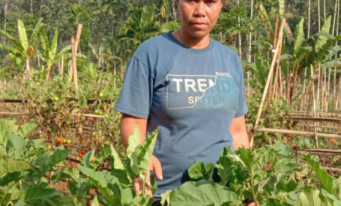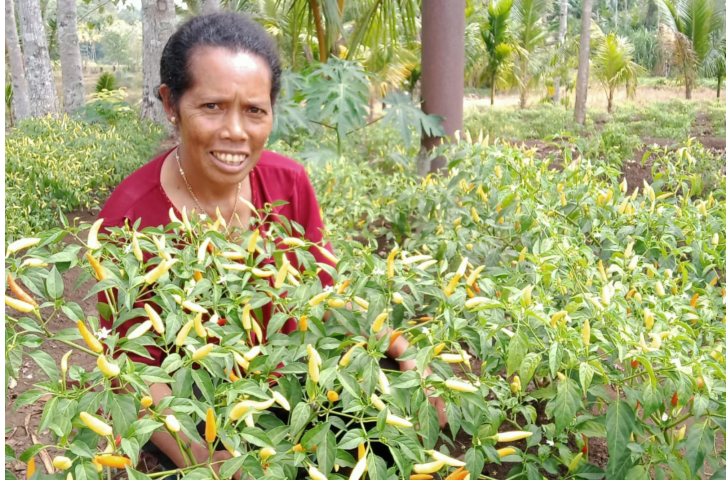

The scorching of the sun felt intense, and the wind that was blowing at that time was unable to dispel the heat felt by Adriana Lodo, who was in the neatly lined-up beds of chili plants. The field covers an area of 5 acres, where the orange-colored chili peppers are starting to appear, indicating they are ready to harvest. Adriana Lodo, who is commonly called Mama Umbu, is the owner of this chili garden. Despite the extremely hot and scorching weather, her spirit remains aflame.
Mama Umbu has a side job selling ice at elementary schools and taking care of her vegetable plants after finishing her sales duties. She cultivates mustard greens and kale to meet her daily needs. “I don’t have the expertise to care for other plants,” she says when asked why she only planted these two commodities. With four children, three of whom are pursuing higher education in college and high school, Mama Umbu and her husband need to work hard to make ends meet. She has also tried cultivating various types of plants, such as grapefruit, cocoa, durian, and bird’s eye chili in large quantities, around 3000 trees. However, due to a lack of knowledge and care, only failure was achieved, as seen with her chili plants falling victim to anthracnose disease. This bitter experience made her reluctant to try growing chilies again.
The presence of Yayasan Bina Tani Sejahtera (YBTS) and supported by the William & Lily Foundation (WLF) through the Agricultural Livelihood through Integrated Approach (PERMATA) program paved the way for Mama Umbu and the Ana Lalo farmer group. With training, assistance, and scheduled maintenance, as well as perseverance and learning from the demonstration plot, as many as 2,300 chili plants grew well. Currently, Mama Umbu and other group members are in the process of harvesting, the results of which will be sold at an average price of Rp50,000/kg. This is Mama Umbu and the Ana Lalo farmer group’s first experience cultivating chili on a large scale, and it has been successful up to the harvest. “At first, I was unsure where to sell it and what price to charge, but because the quality of the yield is good, to this day, many buyers come directly to the field. In fact, we have not been able to answer market needs,” explained Mama Umbu. This experience encourages the Ana Lalo farmer group to stay committed and plan for larger-scale cultivation in the future.